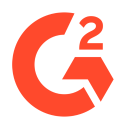We Bootstrapped A Seven-Figure Innovation Management SaaS [From Finland]
Hello! Who are you and what business did you start?
I’m Jesse Nieminen, the Co-founder and Chief Growth Officer for Viima. Viima is the most widely used and highest-rated innovation management software in the world. Innovation management software helps organizations systematically collect, develop, and manage ideas all the way through to innovations.
Our customers are medium and large organizations across every industry, but the one thing they have in common is that they are looking to make more innovation happen. We have more than 13 000 organizations from all around the world using our platform, which we’re super excited about and proud of, especially since we’re a bootstrapped company based in a small home market (Finland). We’re currently growing our recurring revenue at a rate of around 70% year-over-year, while also being highly profitable.


Download the report and join our email newsletter packed with business ideas and money-making opportunities, backed by real-life case studies.

Download the report and join our email newsletter packed with business ideas and money-making opportunities, backed by real-life case studies.

Download the report and join our email newsletter packed with business ideas and money-making opportunities, backed by real-life case studies.

Download the report and join our email newsletter packed with business ideas and money-making opportunities, backed by real-life case studies.

Download the report and join our email newsletter packed with business ideas and money-making opportunities, backed by real-life case studies.

Download the report and join our email newsletter packed with business ideas and money-making opportunities, backed by real-life case studies.

Download the report and join our email newsletter packed with business ideas and money-making opportunities, backed by real-life case studies.

Download the report and join our email newsletter packed with business ideas and money-making opportunities, backed by real-life case studies.











































